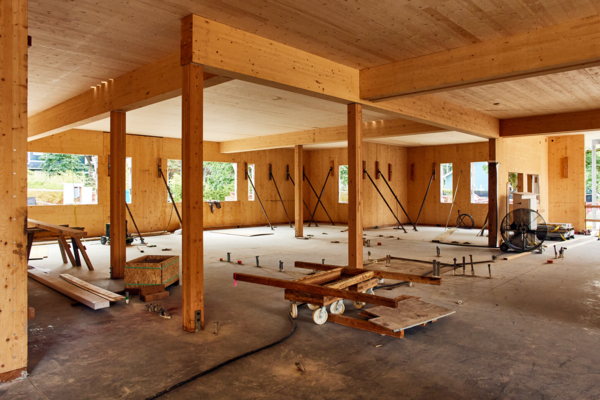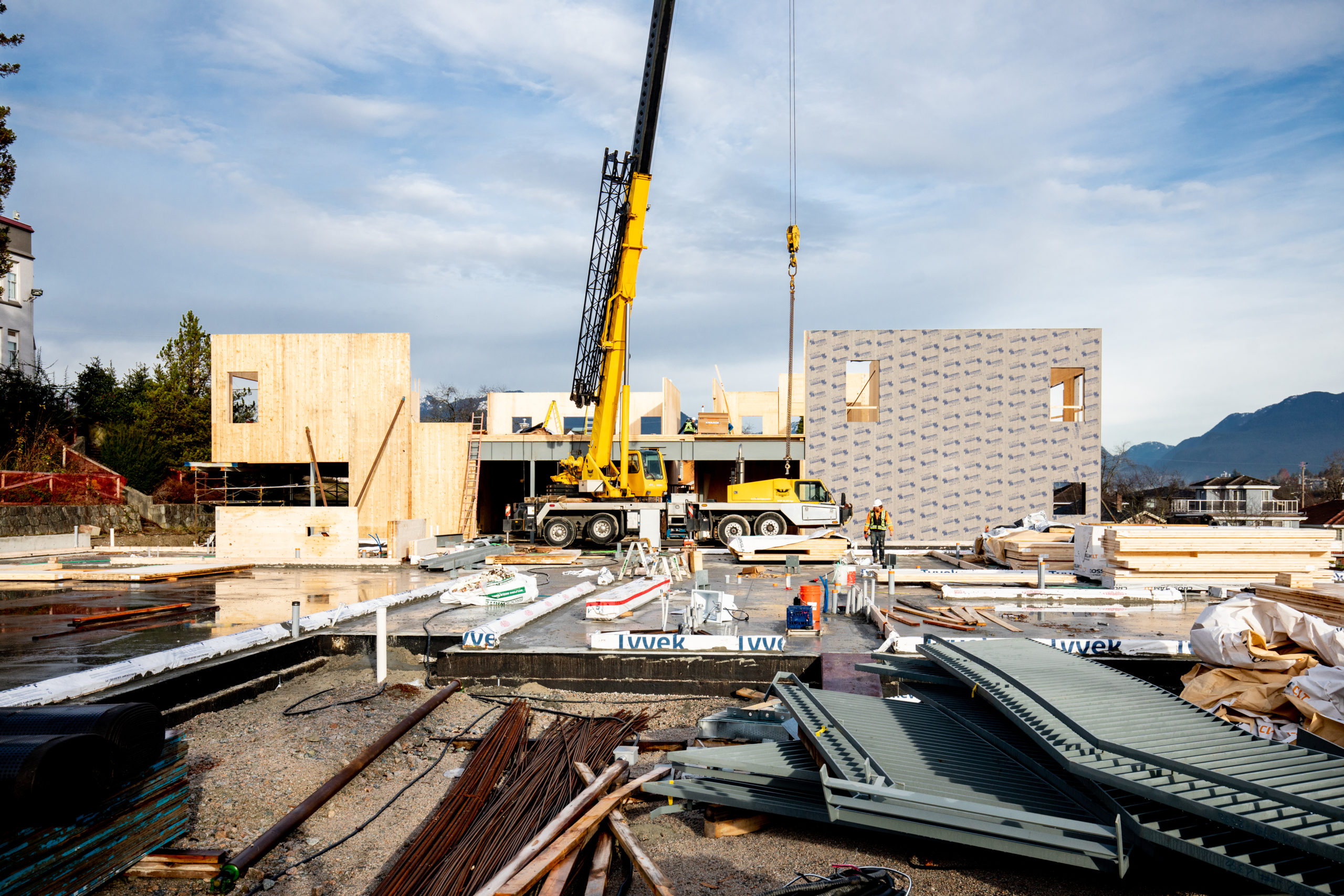High degrees of ductility
Wood withstanding lateral loads
In regions where there is seismic activity, flexible foundation systems, counterweights, and even pendulums are used in tall buildings to avoid or counterbalance the structure as it sways. But in addition to structural reinforcements, the materials that make up the building can play a key role. Wood as a structural material works particularly well in the case of earthquakes, as wood lateral force resisting systems tend to have high degrees of ductility. This means that it is a material that supports a great deal of deformation until the moment of its fracture. That is, it bends before breaking. Just think about the behavior of a tree in a windstorm. This is possible because wood is composed of long, thin, strong cells and the elongated shape of the cell walls gives the wood its high strength parallel to the grain. Wood products can withstand very high loads, particularly when compression and tension forces are exerted parallel to the wood fibres.
Bayview Elementary School seismic replacement | Photo credit: Wade Comer Photography


